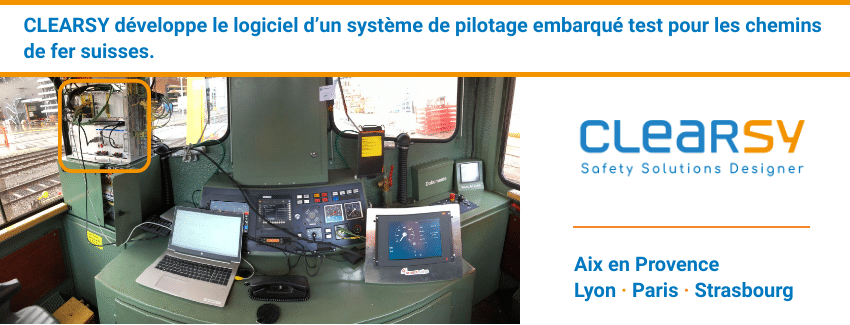
Associated with the modernization of the on-board control system of Swiss trains on behalf of SBB, CLEARSY called upon the ERTMS solutions of its Strasbourg site.
SBB, the Swiss Federal Railways Company, as member of the European OCORA initiative wants to define and promote an open reference architecture for CCS On-board. The project requires a full-scale demonstration of feasibility in the form of a prototype ordered from various component suppliers. CLEARSY won the simulation, development of the on-board software (EVC) – in accordance with European interoperability standards – and integration of peripherals. The dossier falls within the specific skills of its Strasbourg site, which specialises in ERTMS (European Rail Traffic Management System) solutions.
With the development of the EVC, CLEARSY inherits a critical batch since it is on the EVC that the proper functioning of the system as a whole will depend. At the request of our customer, we started with openETCS, the open source computer we developed,” explains Mathieu Leboeuf, the engineer in charge of the project. We adapted this computer to the national and regional ERTMS parameters and to the SIL4 environment of the embedded computer purchased off-the-shelf. A software interface layer organizes the data exchanges between the software and its five peripherals: eurobalise reader, wheel speed sensors, on-board data recording system (ORD), train/EVC interface module (TIU) and two types of man-machine interfaces (DMI). Among other skills, this yarrow software filters the measurements coming from the peripherals. As only the measurements received by the VCA are valid, the risk of an erroneous decision is eliminated.
In this case, CLEARSY preferred to secure the EVC’s final integration – its ability to communicate simultaneously with all devices – by testing them separately first. So as not to depend on the suppliers’ schedules, we developed software that simulates these same peripherals,” says Mathieu Leboeuf. These virtual tests allowed us to check the conformity of our IT developments step by step, so that we could confidently integrate the physical peripherals as they were delivered to us. Embedded VCA tests, conducted by SBB, have begun. They will have to demonstrate – and it’s off to a good start – that even when subjected to significant external variations, the software developed and integrated by CLEARSY makes the appropriate decisions.